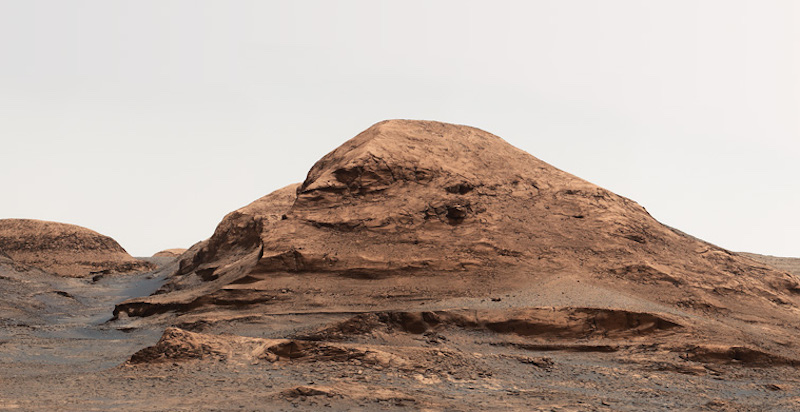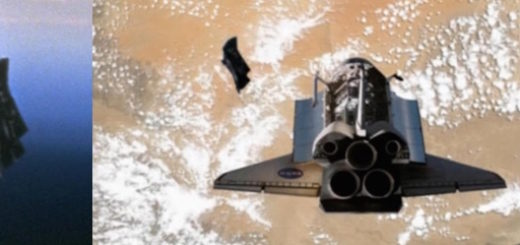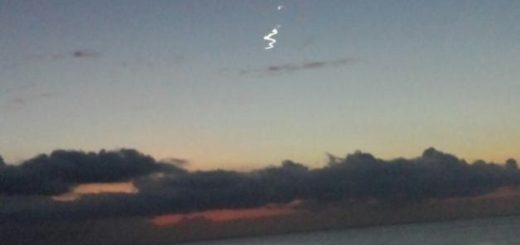Martian Hill Named To Honor Curiosity Scientist

There’s been a lot of focus this month on NASA’s newest rover on Mars, Perseverance and its adorable sidekick, the Mars helicopter, Ingenuity, whose first flight has now been postponed to no earlier than next week. But meanwhile, the Curiosity rover – which has been on Mars since 2012 – is still busy, exploring the mesas and buttes at the base of Mount Sharp in Gale Crater. And there’s news about the Curiosity mission that strikes closer to home. On April 5, 2021, NASA announced that a craggy hump on Mount Sharp has been named Rafael Navarro Mountain. That’s in honor of a Curiosity mission scientist who died in January from Covid-19.
It’s one of those hills the along the rover’s path that has now been named after a scientist who was previously involved with the mission, Rafael Navarro-González, who recently passed away. “Rafael Navarro Mountain” is an informal name, and just one of thousands of names that the Curiosity team has given for various geological features. These names are primarily for team members to use among themselves. Ashwin Vasavada, project scientist for Curiosity, said:
Team members agree on a name for a particular feature of interest, so that people don’t get confused if we observe it with multiple instruments.
Navarro-González was a co-investigator on the Sample Analysis at Mars (SAM) instrument on the rover. Using SAM, he helped lead the team that first found evidence of ancient organic material in rocks in Gale Crater.
Silver-haired man in suit sitting at desk with rover model and Mexican flag.
Rafael Navarro-González, who helped lead the team that found the first ancient organic compounds in rocks in Gale Crater. Image via Luz Fabiola Aceves Diaz/ JPL.
In his memory, his children, Rafael and Karina Navarro Aceves, wrote:
We are truly honored to have a prominent hill named after our dad; it’s his and our dream come true to see this happen.
Ever since our parents met, their dreams merged together and they became a beautiful team, working very hard for 36 years. Our dad was an accomplished scientist, but above all, a great human being who managed to balance work and family. Our mom, Faby, would always tell him that his name one day would be on Mars, and now that is coming true. We all believe that there must be a party in heaven.
Navarro-González died on January 28, 2021, from Covid-19-related complications.
In his career, he also helped to identify the role of volcanic lightning in the origin of life on Earth.
Vasavada also said:
We think of this hill as a gateway. Rafael Navarro Mountain will be constantly in our sights for the next year as Curiosity winds around it.
Other features in Gale Crater have also been named after highly respected scientist Vera Rubin, who confirmed the existence of dark matter, and renowned science fiction and fantasy writer Ray Bradbury.
Rafael Navarro Mountain is the latest of five geological features named after deceased scientists. “Jake Matijevic” was the first one, named after a rover engineer who passed away in 2012. It was the first boulder studied by Curiosity with its instruments. “John Klein” was the previous deputy project manager, who died in 2011. The rover’s first-ever drill hole was named after him. “Nathan Bridges Dune” is a sand dune named for a former co-investigator on Curiosity’s ChemCam instrument. He died in 2017. “Heinrich Wänke” is a rock named to honor the scientist who helped develop the APXS instrument that analyzes the chemical composition of rocks.
Rafael Navarro Mountain is about 450 feet (120 meters) tall, located at the base of Mount Sharp. The hill is in a region of a major geological transition, from a clay-rich area to a sulphate-rich one. Scientists want to study this transition to understand how the Martian climate changed from a wet one to a much drier and colder one.
Reddish, rounded, rock outcrop with rock bump on top and white wispy clouds in sky above.
Curiosity also captured this stunning view of Mont Mercou last month, in the same region. This butte is about 20 feet (6 meters) tall, with many fine layers thought to have been formed when Gale Crater used to be a lake a few billion years ago. Notice also the large walnut-shaped rock sitting on top, and the wispy cirrus-like clouds above! Image processing by Kevin Gill. Image via NASA/ JPL-Caltech/ MSSS/ Kevin M. Gill. Larger and full-size versions are available on Kevin’s Flickr.
Robotic rover next to rounded flat-topped hills.
Selfie image of Curiosity next to Mont Mercou taken on March 26, 2021. Image via NASA/ JPL-Caltech/ MSSS.
Curiosity will now travel around the hill to look for more spots to do drilling. According to Paul Mahaffy, principal investigator of Curiosity’s SAM experiment:
We won’t have Rafael with us for this next stretch, but we will bring his considerable expertise, creativity, and great enthusiasm for astrobiology studies to bear on our investigation of the ancient habitable environments in Gale Crater. Rafael was a good friend and dedicated scientist, and it has been a privilege and honor for our Mars exploration team to work with him over the years.
Previously, in late March, Curiosity was in the “Nontron” region, named after a village in France where the mineral nontronite was first found. Nontronite is one of the most common types of clay that have been found on Mars.
Walnut-shaped rock sitting on larger rocky outcrop.
The large walnut-shaped rock “Rocamadour” sitting on the top of Mont Mercou. Image via NASA/ JPL-Caltech/ MSSS.
The rover also recently captured amazing images of another butte called Mont Mercou, in the Nontron region, which is about 20 feet (6 meters) tall. The butte has many very fine layers in it, thought to have been formed when Gale Crater used to be a lake a few billion years ago. The top of the butte is adorned with a large, eye-catching, walnut-shaped rock called “Rocamadour” that also has numerous similar layers and ridges in it.
Curiosity recently took a cool selfie photo on March 26, when it was next to Mont Mercou. The image also shows the newest drill hole near the hill, the 30th so far in the mission.



 Creators of mankind
Creators of mankind Description of “Tall white aliens”
Description of “Tall white aliens” Where they came from?
Where they came from? About hostile civilizations
About hostile civilizations The war for the Earth
The war for the Earth “Tall white aliens” about eternal life
“Tall white aliens” about eternal life Video: “Nordic aliens”
Video: “Nordic aliens” Aliens
Aliens Alien encounters
Alien encounters The aliens base
The aliens base UFO
UFO Technology UFO
Technology UFO Underground civilization
Underground civilization Ancient alien artifacts
Ancient alien artifacts Military and UFO
Military and UFO Mysteries and hypotheses
Mysteries and hypotheses Scientific facts
Scientific facts


















